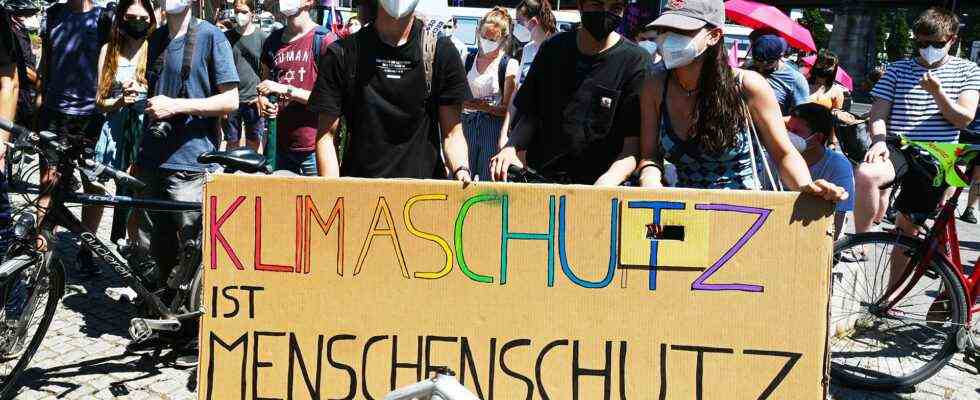background
Status: October 29, 2021 4:56 p.m.
At the 2015 climate conference in Paris, it was agreed to limit global warming to 1.5 degrees. Experts warn that the target is visibly out of reach. Can it still work? And what has happened since Paris?
A quick look at the numbers says: international climate policy – nonexistent. Global greenhouse gas emissions have risen by around half since 1990 – despite all the conferences and agreements.
“Everything is going far too slowly”
“We are still on the way to the climate catastrophe,” says UN Secretary General António Guterres. His experts calculate that the global mean temperature will rise to around 2.7 degrees – even if the commitments made in the Paris Agreement are kept. That is significantly more than the states actually wanted to achieve together: a limitation to well below two, better 1.5 degrees.
The climate analyst Niklas Höhne also confirms this assessment. “Everything is going far too slowly and I would say this COP is still the last chance to keep the 1.5 degree target within reach,” he says. And the youth are urging: “Fridays for Future” on the streets is crying out for fair climate protection – effective and immediate.
There are still 400 to 500 gigatons left
But the scientist admits that this is not a realistic option. Because the UN negotiations do not work as often assumed. Nothing is pressed on the eyes of the states. Nothing is calculated down from the climate budget that the world still has – around 400 to 500 gigatons – and nobody just gets a lot allocated and has to see how they get along with it.
That would be productive, but it is not enforceable. In the UN, a single state that contradicts is enough to overturn that. It works the other way round: the conference in Paris set the goal and a procedure for approaching it together. But each according to his own decision.
First successes since the Paris Agreement
This process does not turn the climate crisis around yet, but it does mitigate it, says Jochen Flasbarth, State Secretary in the Federal Environment Ministry. 2.7 degrees would be too much. “But we are also not in a five- or six-degree world, as was predicted by scientists before Paris. That means that a lot of dynamism has developed between Paris and today,” says Flasbarth.
Höhne also confirms that the political goals at least have the potential to come to a better end. He is responsible for the Climate Action Tracker, which measures progress. If you include the latest announcements as to when countries want to become climate neutral, the picture is more favorable. “If all countries do what they have promised, then we will be around two degrees at the end of the century,” says Höhne. “That is lower than we ever predicted. That is actually good news.”
Climate protection as an economic factor
It has not been said for a long time that the announcements are followed by deeds. But the global economy is also becoming more and more involved, says Sabine Nallinger, head of the 2Grad Foundation, which, together with 80 major German companies, has started an initiative for more climate protection. “From the business side, we’re keeping the pressure high as far as Glasgow is concerned. We’ll be there and show with many local companies how far the economy is there and hope to generate momentum there,” says Nallinger.
Even in Paris, when the politicians were still celebrating their graduation, the then US Secretary of State and current climate envoy, John Kerry, impressively pointed out that climate protection will only succeed if the economy sees it as the market of the future.
Expectations for the climate conference
Werner Eckert, SWR, October 29, 2021 4:18 pm

